10 Animals That Are Insectivores
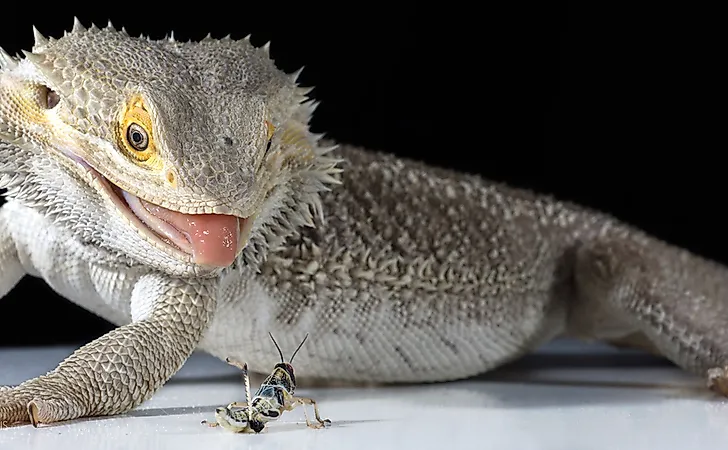
Insectivores refer to animals that feed on insects. Some animals consume insects as well as leaves, fruits, and stems of plants, and others eat insects and other small animals, while others rely exclusively and purely on insects for their diet. Many animals belong to the group of insectivores including amphibians, reptiles, birds, and a small group of mammals. The geographic locations of insectivorous animals are spread around the world, with many species found in North America. The term entomophagy is used to describe the human behavior of eating insects.
Lizards
Lizards are small animals that belong to the group of reptiles. They are cold-blooded and have long tails and four legs. There are approximately 2,700 species of lizards that have been identified around the world, and only two are known to be poisonous. Most lizards feed on insects, and others consume insects and rodents or birds. Exceptionally few species of lizards are either omnivorous or herbivorous. The iguana lizard is one of the herbivorous lizards which are not capable of digesting animal protein. However, most lizards consume insects as their main diet. Lizards vary significantly in size from the smallest Caribbean geckos to the largest Komodo dragons.
Moles And Shrews
Moles are small mammals that spend most of their time in their elaborate burrows underground. Most people think moles are rodents, but they are not, they are insectivores. Their forelimbs are adapted to digging, and they feed on insects, earthworms, grubs, and other invertebrates in the soil. Shrews are small-bodied mammals with exceptionally high metabolic rates, and they continuously forage for food day and night.
Birds
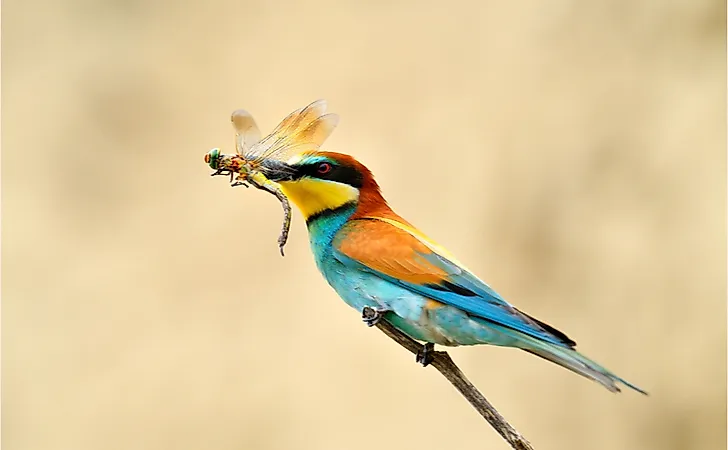
Birds account for the largest group of insectivores animals. The birds that feed on insects can be easily recognized because they have tiny hairs visible using a magnifying lens of a microscope. The hairs are formed on the sides like a mustache, and they allow the birds to recognize insects when they flutter. The shapes of the beak of insectivorous birds are different from the non-insectivorous birds. Their beaks are adapted to getting insects from holes or digging them in their hideouts. For the birds that hunt for insects in the air, their beaks are usually wide, short, and flat. Examples of such birds include swift and swallow. Other birds catch insects when they are still, and their beaks are typically flat, wide, and short, and they include birds such as robin or bee-eater. The birds that feed on invertebrates and insects on the ground like the hoopoes have an elongated and thin beak. Others that pierce the tree barks to remove insect larvae have a straight and strong beak.
Anteater
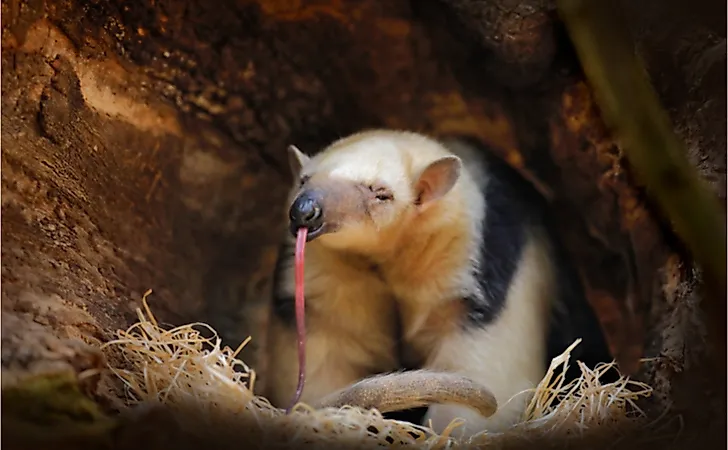
There are about 450 species of insectivore mammals, which account for about 10% of all mammals. Anteater is one of the insectivore mammals. There are four species of anteaters. Anteaters feed on small insects, and each species have a different preference for insects. The smaller species prefer arboreal insects that live on small branches. On the other hand, the larger species are capable of penetrating the hard outer covering of the nest of insects living on terrestrial habitats. The anteaters have a unique way of feeding by licking a large number of termites and ants as quickly as possible. An anteater spends about a minute in one nest before moving to another. A giant anteater could visit as many as 200 nests in a single day to attain its caloric requirement. The tongue of an anteater is covered with numerous tiny hooks known as filiform papillae that, together with saliva, hold insects. When they swallow insects, the jaws move side to side to assist the movement of the tongue. Their tongues are attached to the sternum allowing quick movements of the tongue. Anteaters can flick their tongues about 150 times in a minute.
Philippine Tarsier
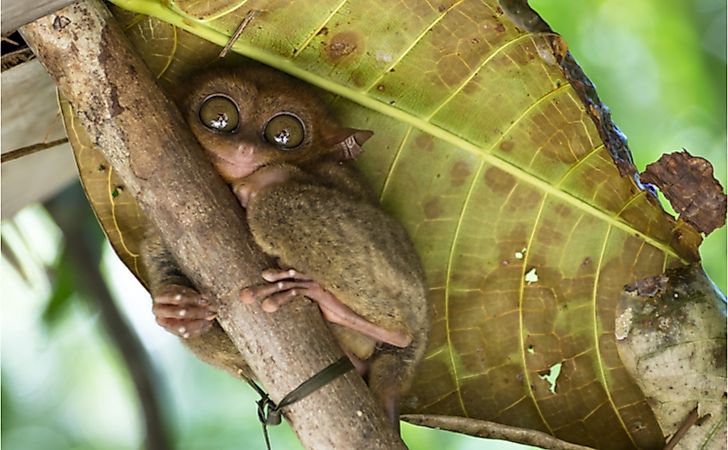
The Philippine tarsier is a small primate endemic to the Philippines found mostly in the southern region of the archipelago. They consume mainly insects and other small animals like spiders, crustaceans, birds, and lizards. Their favorite insects include grasshoppers and crickets.
Gymnures And Hedgehogs
Both the gymnures and hedgehogs belong to the same family of Erinaceidae, and there are a total of seven species. These mammals are native to Southeast Asia, Eurasia, and Africa. The hedgehog species are common in the pet trade, and they are easily identified because of their spine covered bodies. The gymnures almost resemble shrews. The two mammals have mainly insects, but they also consume spiders, small invertebrates, and worms. Large ones can also kill small mammals, reptiles, and amphibians. Occasionally, they consume fruit or fungi. Hedgehogs sometimes prey on eggs of birds.
Solenodons And Tenrecs
Solenodons are mammals that are larger than shrews and moles, with only two species currently remaining in Cuba and Haiti. Solenodon in Cuba is believed to be extinct because of the introduction of rats, cats, dogs, and mongoose. Tenrecs have about 24 species, and many of them are found in Madagascar, while others are found in west and central Africa. About half of the diet of these animals is aquatic insects, and the other half is made up of terrestrial insects, slugs, snails, earthworms, salamanders, fish, mice, and vegetation.
Dragonflies
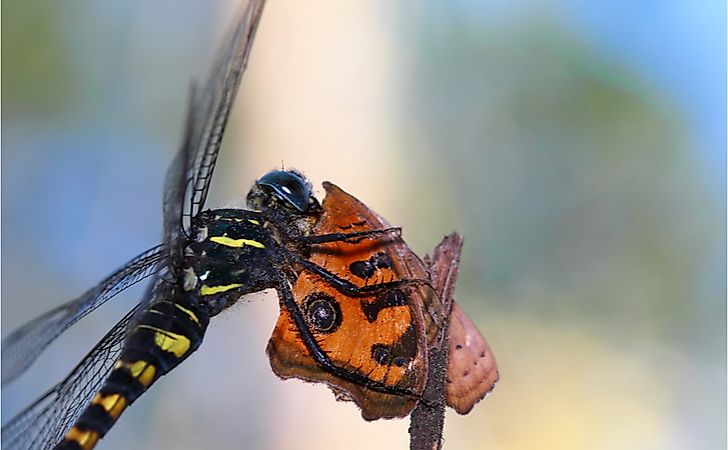
The majority of insects are not insectivores because they eat almost anything such as decaying plants and rotten wood, among many others. However, some insects, such as dragonflies, are predators. They feed on other insects such as mosquitoes and midges. Dragonflies also eat butterflies, other younger dragonflies, and moths. The larvae of a dragonfly live in water and would eat anything having a smaller body than their bodies. Larger larvae occasionally consume small fish. Their primary diet is bloodworm and other larvae of aquatic insects.
Scorpions
There are more than 70,000 species of arachnids and they include scorpions, mites, ticks, daddy-long-legs, and spiders, among others. The diet of arachnids varies significantly depending on species. Some species eat plants, and others eat animals, while others like ticks are parasites. Scorpions eat insects, other arachnids, small reptiles, small mammals, amphibians, and even birds. Scorpions need to take water, although it can go for several months without food. They catch and crush their prey using pincers, while the string is used to inject toxic venom to paralyze the prey.
Frogs And Toads
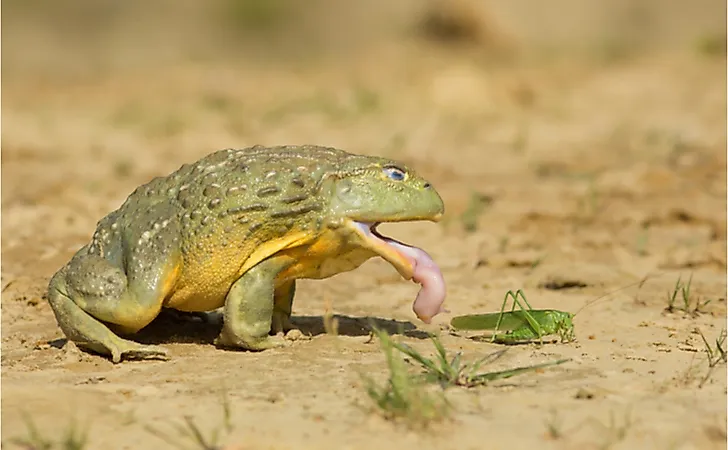
Frogs and toads feed on insects like fruit flies and crickets. Large frogs could also eat small mammals like rats, mice, and even gray fish and other small fish.
Classification
Initially, insectivorous mammals were classified under Insectivora order. This order has been abandoned because all insectivorous mammals are not closely related. Most of Insectivora taxa were re-classified again, while those that have not been re-classified have remained in the order Eulipotyphla.











